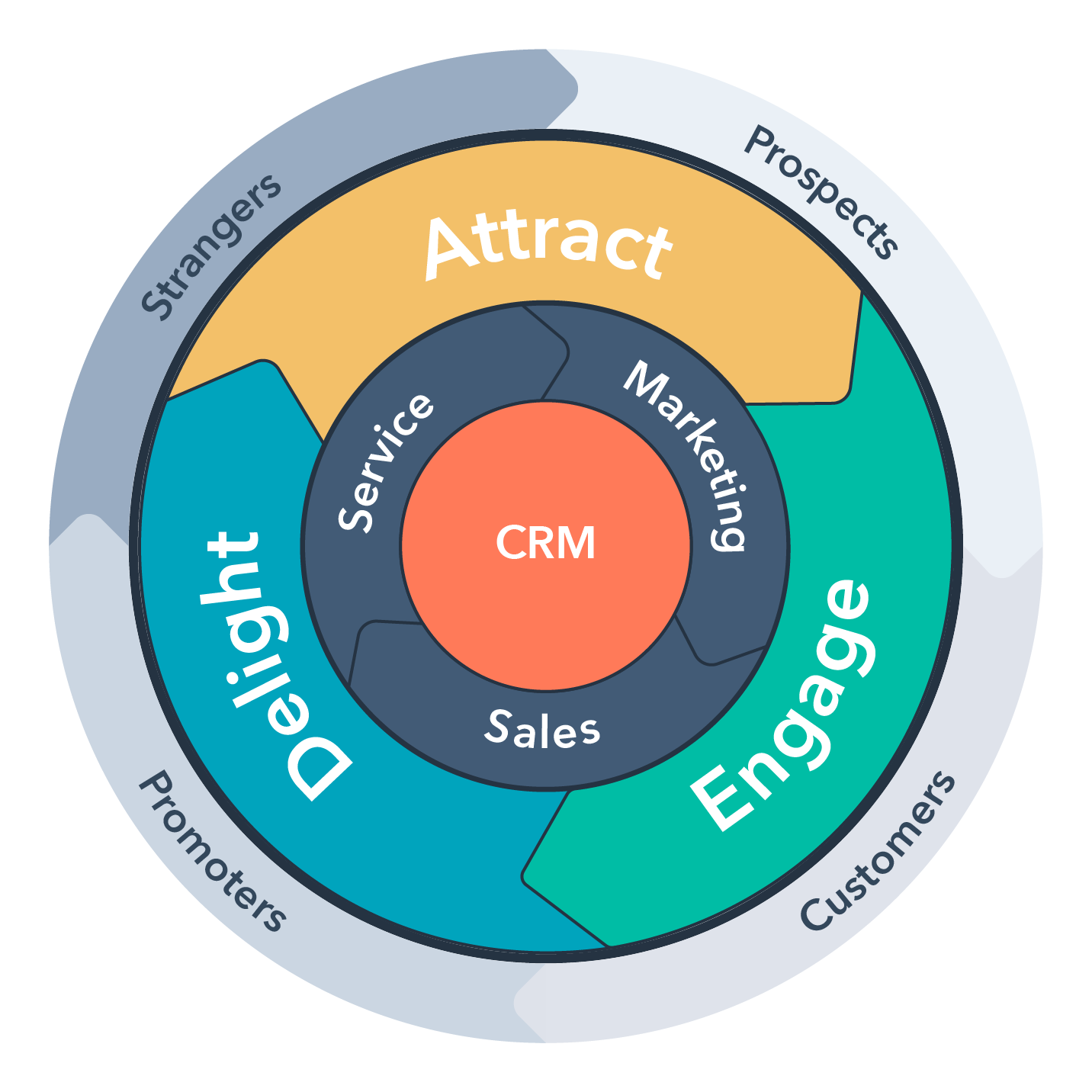Inbound Methodology: Step by Step
- Home
- Inbound Methodology: Step by Step
Since the rise of the Internet, there has been a fundamental shift from 'Outbound' to 'Inbound' Marketing and Sales.
INTRODUCTION TO INBOUND MARKETING AND SALES

In the pre-internet era, you tried to attract and close sales primarily by convincing potential customers of the superiority of your offering. This was "Outbound" methodology in the classic sense. It sought to grab a potential customer's attention and close a sale by pushing the quality and value of the product.
The days of Outbound's primacy are long gone and the methods, whilst still in use, are much less effective. The connectivity and social interaction of the internet have led to the ascendancy of "Inbound marketing" and sales techniques. Rather than placing product quality and value at the forefront of a campaign, marketing and sales teams today attract and close customers with a story, an experience, and the promise of a lasting relationship that affirms customers' core self-image and taps into their need for connection. In a fundamental shift, Inbound methodology speaks first to the qualities and values of the desired customer, rather than the quality and value of the product itself.
This guide is intended to serve as an overview of Inbound Marketing and Inbound Sales Methodology as of mid-2018. It describes and expands on the four key steps of Inbound Marketing and Sales pioneered by HubSpot – Attract, Convert, Close and Delight – with an up-to-date focus on the evolving social media-centric, content-driven strategies that facilitate them.
You can download our guide to Inbound Marketing here.
For a deeper dive into the concepts introduced below, we recommend HubSpot Academy's free Inbound Marketing Certification and Inbound Sales Certification courses.

STEP ONE: ATTRACT STRANGERS WITH CONTENT
The word "content" has taken over the marketing and sales landscape, particularly in the digital arena. The market craves "content". Seemingly endless channels of "content" proliferate on our devices. "Content" defines products and brands. But…what is "content", exactly, and what role does it play in Inbound Methodology?
What Content Is
In Inbound Methodology, "content" refers to any form of intellectual property created and published with the core purpose of attracting strangers to become customers of a brand or product. In the digital arena, it principally consists of short and long-form writing (from 280 characters on Twitter to 1000-word blog entries), still and moving images (from Instagram posts to streaming web series), coding (brand-centric apps and virtual interactive experiences), and audio (podcasts and music). Offline, it also includes the creation, scripting, and branding of live-action events, product tie-ins, and customer experiences, as well as traditional radio, television, and print advertising.
Who Content Speaks To
Smart, effective content lures strangers to become customers by speaking to the needs and interests of an ideal customer persona. This persona embodies the key demographic qualities, values, and desires that define an identifiable segment of the seller's target market. Content speaks directly to that ideal customer persona by answering his/her questions, depicting his/her best lifestyle, and helping solve his/her pressing life challenges. Most sellers have more than one persona to whom they want to speak and need to create and publish content that is either tailored to each persona individually or that speaks broadly to a range of ideal personae.
Throughout the Inbound Marketing and Sales cycle described below, sellers use the information they collect from actual customer interactions to refine the ideal customer personae and make their content more effective at attracting strangers to become customers.
How and Where Content Succeeds
Because content's purpose is to attract strangers to become customers using ideal personae, to succeed it must balance creativity with data-driven precision. Attracting a stranger to a brand or product requires identifying detailed characteristics of every persona the seller wants to reach, establishing a presence on the platforms where each persona typically consumes content, and creating content that stands out in the crowd for that persona.
Typical publishing channels for content, as of mid-2018, include social media (Instagram, Facebook, Twitter) streaming video (YouTube), and messaging (WhatsApp, SnapChat) platforms, seller and third-party blogs, web pages, and news articles optimised for SEO, and audio distribution channels (Soundcloud, Spotify, Apple Music), as well as traditional print, television, and radio. Content on these platforms can be branded ("brought to you by XYZ Corp.!") or, increasingly, "white label" (created and/or published by third-party influencers, both corporate and individual).
At its best, content succeeds in attracting the attention of every desired customer persona without explicitly making a "sales pitch" or seeming like an advertisement in the traditional sense. Instead, it induces (some might say "seduces") the potential customer, a stranger, to see something of themselves reflected back at them in an affirming, useful way; a question they need someone to answer, a life, look, or value to which they aspire, or a problem they want to fix.

STEP TWO: CONVERT CURIOUS VISITORS INTO WILLING LEADS
You have the attention of a stranger who matches your ideal customer persona. Your content is doing its job of engaging and reflecting their interests and needs. Now what?
Get. Them. To. Give. You. Information. In. Return.
Today's consumer increasingly understands and embraces the transactional nature of consuming content. What once seemed (and still seems to some older consumers) like an uncomfortable intrusion on privacy and anonymity has increasingly transformed into an expected aspect of the give-and-take of online life.
You deliver quality content, and, in return, consumers tell you something about themselves. Your goal is to harvest and use information consumers give you passively and actively to improve their individual experience, and to shape future content to attract others like them. Through this process of trading content for information, strangers become willing leads.
Information Visitors Give You Passively
Having created targeted content based on ideal customer personae, you should already know something fundamental about your visitors. By the mere fact they've consumed content targeted to a specific market segment, you can infer some basic information about their general concerns and interests in life. By using even the most basic digital analytics tools as of mid-2018, you should also gain some core information about your visitors as they consume your content, such as where they're visiting from, what device they used to access your content, how long they stayed on your content, and where else they navigated.
These data points can be a gold mine of information that helps you deliver further, more targeted content to begin converting a sale, provided you have a way to reach that customer again directly.
Information Visitors Give You Actively
Which is why you must also have a strategy for identifying and reconnecting with that particular visitor in order to convert them into a willing lead. How do you accomplish this? You position your content to invite a response, you ask for more information, and you keep track of what you learn about each visitor.
By "positioning," we mean publishing content, and maintaining a presence on platforms, in a way that encourages sharing and feedback. Social media is, at the moment, the most dynamic, powerful and seamless tool for positioning content in this manner, as evidenced by how seemingly every online content provider has incorporated social media-style features into their platform.
Why is social media so popular? Because every slice of content you place in social media-style channels creates multiple opportunities for interaction with an ideal customer. Every response to your content, whether it's in the form of a "like", a share, or actual feedback, multiplies that opportunity and opens up a channel of communication with a potential customer who has willingly shared their publicly available information with you.
Of course, not all content fits in a social media post, and not all social media profiles give you the information you need to convert a visitor into a customer. That's why it's also important to ask for the information you need. Ask for an email address. Ask for a rating. Ask your visitor to call you, or to fill out a simple form that tells you what they care about, or to chat with you live via on-site instant messaging. Asking is polite, it's unobtrusive, and it works.
Finally, to convert each of these visitors into willing leads, you need to keep track of everything you know about them so far and what you still want to know. Each visitor's data in your ever-expanding database becomes a profile that represents an actual persona to whom you can speak precisely and meaningfully, and against whom you can tweak your ideal personae criteria to create still more attractive content.

STEP THREE: CLOSE AND LEARN
A stranger who has become a willing lead is ready to buy your offering. Remember, people love to buy, they hate to be 'sold'. Your Inbound Marketing strategy has worked and now it's time for your Inbound Sales effort to kick in. Your sales team's job is twofold: (1) close the sale and (2) learn as much as you can from the interaction to help your marketing team keep the customer coming back for more and keep improving your ideal customer personae and the content you create to speak to it.
The inbound sale
You already have an actual persona about whom you know quite a bit of information. It's time to offer that willing lead a product or service that meets their immediate needs and lays the foundation for a long-term relationship. The sale, in other words, ideally incorporates what you've learned about your potential customer so far from their response to your content, and finds ways to perpetuate the "through line" of the story or experience to which they responded.
There are plenty of tools for making your closing sales pitch.
- Marketing automation platforms, for instance, can take the results of a contact form and convert it into automatic emails and texts to present the lead with offers they've expressed interest in learning about.
- Social media ad campaigns can target offers at specific users or user categories.
- Through the now-well-established use of analytics and cookies, you can configure your web page to make a specific offer to a visitor immediately, and to pitch your offering in banner ads on other sites the visitor uses.
- And, of course, tried-and-true methods of reaching out directly, from phone calls to direct mail, still have their place and a long track record of success, particularly when paired with the detailed profile you've assembled of your newfound customer.
In short, by following the Inbound Marketing steps to this point, you should have delivered all the information about your stranger-turned-willing-lead your sales team needs to close the sale.
The learning
But, don't rest on your laurels. The important task of gathering information from your customer never ends. There is, of course, the information you need from your customer at the point of sale – contact information, credit card information, and so forth. But you can, and should, also gather and infer information from what your customer is buying to help you tailor the content, context, and timing of your next sales pitch.
For instance, sales automation software identifies and offers complementary products to the customer immediately at the point of sale, such as the hot mitts to go with a new barbecue grill, or the perfect accessory to match with a jumper. CRM software helps track whether other products have shipped to the same customer address, if the customer's name has changed, or other nuances in the customer's profile. Marketing automation tools help you send timely follow-up emails and texts seeking feedback and offering support, and collect information on whether and how the customer interacts with this outreach.
All of these data points further populate your database of actual customer personae. Once again, you parse and analyse this data to target further offerings to the particular customer, and to enhance the content you create to attract more customers like them.

STEP FOUR: DELIGHT TO MULTIPLY
One sale becomes many when you treat it as the beginning of a long, mutually-beneficial journey with your new customer. The process of cementing the relationship should already have begun at the point of sale, as described above. But it does not end there. In today's content-centric environment, you must continue to create current, fresh content that speaks to your customer's evolving persona, keeping the customer delighted by and engaged with your product and brand to encourage them to become a product/brand multiplier.
You now know enough about how to reach your customer to speak to them directly and precisely at the times and through the channels they prefer. The opportunities to delight your customer at this stage are endless. So long as you refrain from exhausting them with "junk" or stale content, and you keep your persona database current and accurate, you can use your informational advantage to reward and incentivise your customer again and again. For example, you can send your customer reminders when it's time to buy again. You can stimulate them with exclusive offers and content that are truly (and not just generically) exclusive and personal. In short, you can develop a relationship in the most human sense of that word.
And that's not all. The multiplier effect of social media-type platforms and the inherently transactional nature of online digital interaction now have the potential to have an exponential benefit for your Inbound Marketing and Sales efforts. Every customer who consumes content on a digital platform becomes a potential "node" in your network that can multiply your message within the market segment you have already targeted with your ideal personae. When your customers share content that delights them with their network friends, they validate your offering...and the Inbound cycle begins anew.
More information
Download our guide to Inbound Marketing
